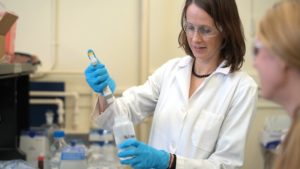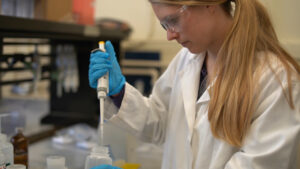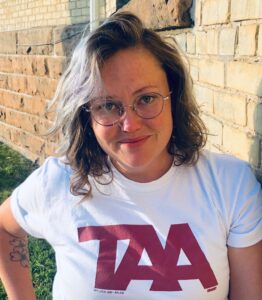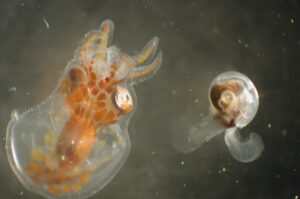Assessing the Global Climate in January 2022
NCEI News Feed
http://www.ncei.noaa.gov/news/global-climate-202201
NCEI News Feed
http://www.ncei.noaa.gov/news/global-climate-202201
New sessions of Michigan’s NotMISpecies webinar series will cover how conservation officers help prevent invasive species introductions, as well as ways to enjoy the outdoors while minimizing harmful effects of invasive plants, animals and pests. Read the full story by the Daily Press.
Great Lakes Commission
https://www.glc.org/dailynews/20220214-invasive-species
The committee working on an overhaul of the plan that governs water-level management in Lake Ontario has developed a computer model that may predict the impact of higher water on lakefront property. Read the full story by The Buffalo News.
Great Lakes Commission
https://www.glc.org/dailynews/20220214-flood-forecast
Clean Water and Air, LLC, filed a complaint accusing Tofte Wastwater Treatment Association (aka Bluefin Bay) of past and ongoing violations of the Clean Water Act (CWA), including the continued pollution of Lake Superior with “mercury, fecal matter, coliform, and suspended solids.”. Read the full story by Law Street Media.
Great Lakes Commission
https://www.glc.org/dailynews/20220214-pollution
Michigan State University professor Dr. Alan Arbogast has used repeat photography to study the changing landscape on Lake Michigan’s sand dunes. Read the full story by WJBK – TV – Detroit, MI.
Great Lakes Commission
https://www.glc.org/dailynews/20220214-dunes
The waves of Lake Erie form the ice dunes along the beaches, but each wave creates another layer of unstable ice, making for an unsafe place to walk. Read the full story by WJET -TV – Erie, Pennsylvania.
Great Lakes Commission
https://www.glc.org/dailynews/20220214-ice-safety
The Nature Conservancy in Ohio (TNC) and the city of Ashtabula recently wrapped up a three-year project to restore beach and dune habitat at Walnut Beach Park. Read the full story by the Star Beacon.
Great Lakes Commission
https://www.glc.org/dailynews/20220214-restoration
The Great Lakes’ warming winters are well-known through Michigan, in part because declining ice cover is visible from the surface. Read the full story by Michigan Public Radio.
Great Lakes Commission
https://www.glc.org/dailynews/20220214-climate-change
The White Earth band of Anishinaabe the largest of the six federally recognized Indigenous reservations that make up the Minnesota Chippewa Tribe, is fighting to prevent the line 3 pipeline from crossing wetlands used for harvesting native wild rice. Read and hear the full story by Canada’s National Observer.
Great Lakes Commission
https://www.glc.org/dailynews/20220214-wild-rice
The world’s largest source of fresh water, the Great Lakes, provides drinking water to more than 40 million people in the U.S. and Canada. In the first study of its kind, researchers at the University of Wisconsin-Madison College of Engineering have demonstrated that tributary rivers feeding Lake Michigan play an important role in bringing the human-made group of chemicals known as per- and polyfluoroalkyl substances (PFAS) to the Great Lakes system.

Researcher Christy Remucal in her lab on the University of Wisconsin-Madison campus is analyzing water samples taken from known contamination sites, the Menominee and Peshtigo rivers, which feed into Lake Michigan. Photo: Bonnie Willison
Christy Remucal with the Department of Civil and Environmental Engineering, and postdoctoral co-investigator Sarah Balgooyen quantified 10 PFAS chemicals known as perfluoroalkyl acids (PFAAs), in the water and sediment of 41 tributaries to Green Bay of Lake Michigan.
The study is published in the Feb. 10, 2022, edition of the ACS ES&T Water Journal (https://pubs.acs.org/doi/full/10.1021/acsestwater.1c00348). It was funded by a grant from the Wisconsin Sea Grant College Program.
“Tributary PFAS loading to the Great Lakes is poorly understood,” Remucal said. “The role of sediments as a PFAS source or sink is also largely unknown. Our study is bringing some much-needed answers to not only the people who live around the bay of Green Bay, but also to all of the Great Lakes communities because it’s an interconnected water system. These findings could also be extrapolated to understand the conditions surrounding thousands of other tributaries that flow into the five lakes.”
PFAAs are found in common household items like cookware, cleaning agents and fabric treated with repellants, as well as in firefighting foams. In the study area, the Fox, Menominee and Peshtigo rivers contribute two-thirds of the total tributary PFAA loading to Green Bay despite their relatively low concentrations and despite the current regulatory focus on sites with high PFAA concentrations. The sources of the chemicals in the study tributaries are likely linked to a firefighting foam manufacturer, other industrial activity and airports, which use firefighting foam on runways.
In addition to the tributary discharge, the work showed that tributary sediments can contribute to PFAA via a releasing process known as desorption. Contaminated riverbed sediments may act as a PFAA source even if water concentrations are reduced by pollution mitigation.

Sarah Balgooyen, a postdoctoral investigator of PFAS, said there are likely more than 5,000 compounds known as per- and polyfluoroalkyl substances. In research published today in a leading journal Balgooyen quantifies 10 of the chemicals analyzed in the water and sediment of Lake Michigan tributary water bodies. Photo: Bonnie Willison
“Understandably, there is a heightened interest in the levels of PFAS in drinking water. PFAS have been linked to a number of ill human health effects, including cancer,” Balgooyen said. “I’m grateful for the opportunity to share my research. It certainly leads to a clearer understanding and, hopefully, can provide some guidance on contamination cleanup.”
The research will also inform the Wisconsin PFAS Action Council, of which Remucal is a member as the University of Wisconsin System representative. She is joined by representatives from 17 state agencies. The group has identified eight PFAS priority themes, including one on sampling and one on research and knowledge.
A video about this project can be found here.
The post Great Lakes tributary rivers play important role in bringing PFAS to the drinking water source of millions first appeared on Wisconsin Sea Grant.
News Releases | Wisconsin Sea Grant
News Releases | Wisconsin Sea Grant
https://www.seagrant.wisc.edu/news/great-lakes-tributary-rivers-play-important-role-in-bringing-pfas-to-the-drinking-water-source-of-millions/?utm_source=rss&utm_medium=rss&utm_campaign=great-lakes-tributary-rivers-play-important-role-in-bringing-pfas-to-the-drinking-water-source-of-millions
By Hope O’Dell Capital News Service In the age of Uber and Lyft, public transportation is still the only viable option for many Michigan residents. “Sometimes on the weekend, or if you catch the right person, you might be able to grab an Uber, but it’s not regular service like that,” said Kelly Getman-Dissette, the […]
The post Dial-a-ride services struggle with driver shortage first appeared on Great Lakes Echo.Great Lakes Echo
http://greatlakesecho.org/2022/02/14/dial-a-ride-services-struggle-with-driver-shortage/
Current Watches, Warnings and Advisories for Brown (WIC009) Wisconsin Issued by the National Weather Service
https://alerts.weather.gov/cap/wwacapget.php?x=WI1263E29D5A78.SpecialWeatherStatement.1263E29ECC00WI.GRBSPSGRB.3b77a733acfe35fc01f412b80021d336
Current Watches, Warnings and Advisories for Brown (WIC009) Wisconsin Issued by the National Weather Service
https://alerts.weather.gov/cap/wwacapget.php?x=WI1263E290EE00.SpecialWeatherStatement.1263E29D6C70WI.GRBSPSGRB.3b77a733acfe35fc01f412b80021d336
Current Watches, Warnings and Advisories for Brown (WIC009) Wisconsin Issued by the National Weather Service
https://alerts.weather.gov/cap/wwacapget.php?x=WI1263E28E6658.SpecialWeatherStatement.1263E28F89C0WI.GRBSPSGRB.3b77a733acfe35fc01f412b80021d336
Current Watches, Warnings and Advisories for Brown (WIC009) Wisconsin Issued by the National Weather Service
https://alerts.weather.gov/cap/wwacapget.php?x=WI1263E28DB5C8.SpecialWeatherStatement.1263E28E7850WI.GRBSPSGRB.3b77a733acfe35fc01f412b80021d336
THIS WEEK: Next Week: Join Us for the All About Water Symposium on Feb 17th; Join the Q&A Projects Grants Webinar on Feb 22nd; Have Your Voice Heard on Michigan’s Draft Healthy Climate Plan; First Nations $8-Billion Class-Action Settlement; Ontario Government Plans to Build New Highways Through Provincial Greenbelt
Freshwater Future and All About Water are excited to share a space with you to join experts, peer groups and municipal officials to learn about federal dollars coming to states for water infrastructure projects. By participating you will gain valuable information about how your municipality can benefit from available federal funding to help replace lead lines, update water and wastewater treatment plants, utilize green infrastructure to prevent or reduce flooding, and more. REGISTER NOW! Thursday, February 17th, 9:30 am – noon EST.
Freshwater Future has been fortunate to provide Grant Programs for grassroots community organizations for over 26 years. Learn more about our Grants Program on Tuesday, February 22nd– noon (EST). To register online, please click HERE. To register by email or phone, please contact laurie@freshwaterfuture.org, (231)348-8200. Also, visit the grant map on our website to learn more about our Grant Programs funding initiatives and HERE for our grant Request for Proposals.
Michigan recently released a draft MI Healthy Climate Plan focused on reducing greenhouse gas emissions. Public input and feedback on the plan can be submitted verbally at two remaining listening sessions:
February 14, 2022 from 6:00 to 8:00 pm, Focus on Environmental Justice – Register Here
Written comments can be submitted until March 14, 2022 to EGLE-ClimateSolutions@Michigan.gov.
Members of Canadian First Nations who have been affected by drinking water advisories for years will be compensated in what one chief called a “historic moment” for First Nations in Canada. Neskantaga First Nation and Curve Lake First Nation in Ontario, along with Tataskewyak Cree Nation in northern Manitoba, started a class-action lawsuit against the federal government over long-term drinking water advisories. The agreement includes an infrastructure commitment of at least $6 billion to support access to safe drinking water on reserves and $1.5 billion in compensation to individuals deprived of clean drinking water.
Planning for two new highways, Highway 413 and the Bradford Bypass, is underway. While the provincial government claims that the highways are needed to reduce commute times through the Greater Toronto Area, conservation organizations and many local communities (including Toronto, Markham, and Vaughan) are opposed to the proposed highways. The proposed routes are through the Greenbelt and will have potential impacts on fish and wildlife habitat, water quality and will increase greenhouse gas emissions. The provincial environmental assessment process has been streamlined and there are concerns that environmental issues are not being adequately considered and addressed. Additionally, there have been concerns with the consultation process.
Blog – Freshwater Future
https://freshwaterfuture.org/freshwater-weekly/freshwater-future-weekly-february-11-2022/
Current Watches, Warnings and Advisories for Brown (WIC009) Wisconsin Issued by the National Weather Service
https://alerts.weather.gov/cap/wwacapget.php?x=WI1263E2818960.SpecialWeatherStatement.1263E28DB500WI.GRBSPSGRB.3b77a733acfe35fc01f412b80021d336

By Matthew Brown and John Flesher, Associated Press
BILLINGS, Mont (AP) — A judge restored federal protections for gray wolves across much of the U.S. on Thursday, after their removal in the waning days of the Trump administration exposed the predators to hunting that critics said would undermine their rebound from widespread extermination early last century.
Great Lakes Now
https://www.greatlakesnow.org/2022/02/ap-judge-protections-gray-wolves/
The Great Lakes are staying frozen for less time each year, and the ice that does form is more unstable thanks to shifting climate patterns and water temperatures. Read the full story by Grist.
Great Lakes Commission
https://www.glc.org/dailynews/202202011-climate-change
As the U.S. EPA prepares to expand its Great Lakes Restoration Initiative with the $1 billion-dollar windfall from the infrastructure bill, Ojibwe Tribal executive Michael “Mic” Isham wants an increased emphasis on protection of the Great Lakes with a priority for Lake Superior. Read the full story by Great Lakes Now.
Great Lakes Commission
https://www.glc.org/dailynews/202202011-lake-superior
Wednesday, Rep. Frank J. Mrvan announced that the Sanitary District of Michigan City, Indiana, will receive a grant award from the Nonpoint Source Runoff and Nutrient Reduction Program under the Great Lakes Restoration Initiative. Read the full story by WIMS – Michigan City, IN.
Great Lakes Commission
https://www.glc.org/dailynews/202202011-glri-grant
According to NOAA’s Great Lakes Regional Coordinator, the designation of an area in Lake Ontario waters as a national marine sanctuary to protect a nationally significant collection of shipwrecks is about to enter its final stage. Read the full story by the Watertown Daily Times.
Great Lakes Commission
https://www.glc.org/dailynews/202202011-marine-sanctuary
Pennsylvania’s Coastal Resources Management Program has awarded Erie County over $250,000 for coastal projects to address increasing pressure from development, erosion, biodiversity loss, and pollution. Read the full story by Erie News Now.
Great Lakes Commission
https://www.glc.org/dailynews/202202011-coastal
Some Ohio residents have mounted a legal challenge to the wind project being deliberated by the Ohio Supreme Court citing concerns about the turbines’ environmental impact. Read the full story by Spectrum News1.
Great Lakes Commission
https://www.glc.org/dailynews/202202011-wind-farm
Forty-three species of native freshwater mussels exist in Michigan, but up to 75 percent of them are endangered or threatened. The native freshwater mussels are an important factor in maintaining thriving rivers and lakes, so how can we better protect them? Read the full story by WWTV-TV – Cadillac, MI.
Great Lakes Commission
https://www.glc.org/dailynews/202202011-mussels
The government of Québec Premier François Legault is taking a step back and will re-evaluate its megaproject of a tunnel between Québec City and Lévis under the St. Lawrence River that was originally proposed to have 6 lanes and cost $10 billion. Read the fully story by the Montreal Gazette.
Great Lakes Commission
https://www.glc.org/dailynews/202202011-tunnel
Historical satellite imagery from Google Earth shows how erosion along the Lake Michigan shoreline in Wisconsin counties has affected public spaces, as well as lakefront homes. Read the full story the Wisconsin State Journal.
Great Lakes Commission
https://www.glc.org/dailynews/202202011-erosion
The proposal to build a cruise ship dock in Holland, Michigan could put it at odds with Muskegon, which, just 31 miles north, has its own dock for cruise ships in Lake Michigan. But Holland City Manager Keith Van Beek said he doesn’t expect a Holland cruise ship dock would take business from Muskegon. Read the full story by MLive.com.
Great Lakes Commission
https://www.glc.org/dailynews/202202011-dock
Current Watches, Warnings and Advisories for Brown (WIC009) Wisconsin Issued by the National Weather Service
https://alerts.weather.gov/cap/wwacapget.php?x=WI1263E280C9F8.SpecialWeatherStatement.1263E2813D98WI.GRBSPSGRB.3b77a733acfe35fc01f412b80021d336

By Emma McIntosh, The Narwhal
This story first ran on The Narwhal, a non-profit news organization that publishes in-depth stories about Canada’s natural world.
The final resting place of Canada’s most radioactive nuclear waste could be a cave about as deep below the surface as the CN Tower is tall.
Great Lakes Now
https://www.greatlakesnow.org/2022/02/canada-old-pileup-nuclear-waste/
Current Watches, Warnings and Advisories for Brown (WIC009) Wisconsin Issued by the National Weather Service
https://alerts.weather.gov/cap/wwacapget.php?x=WI1263E2804DC0.SpecialWeatherStatement.1263E280E3C0WI.GRBSPSGRB.3b77a733acfe35fc01f412b80021d336
A new book explores the interconnected layers of the Great Lakes, from the leadership of local native tribes to the concerning intensity of resource extraction. The book took several years to write to fully and accurately capture a cohesive picture of the Great Lakes and their histories.
The post New book explores ecological odyssey of the Great Lakes first appeared on Great Lakes Echo.Great Lakes Echo
http://greatlakesecho.org/2022/02/11/new-book-explores-ecological-odyssey-of-the-great-lakes/
Current Watches, Warnings and Advisories for Brown (WIC009) Wisconsin Issued by the National Weather Service
https://alerts.weather.gov/cap/wwacapget.php?x=WI1263E27F3674.SpecialWeatherStatement.1263E27FAB40WI.GRBSPSGRB.494cf03b682e092eb57578d83349b4a7
Current Watches, Warnings and Advisories for Brown (WIC009) Wisconsin Issued by the National Weather Service
https://alerts.weather.gov/cap/wwacapget.php?x=WI1263E27EF40C.SpecialWeatherStatement.1263E27F5D20WI.GRBSPSGRB.494cf03b682e092eb57578d83349b4a7
Current Watches, Warnings and Advisories for Brown (WIC009) Wisconsin Issued by the National Weather Service
https://alerts.weather.gov/cap/wwacapget.php?x=WI1263E27E9E1C.SpecialWeatherStatement.1263E27EF3A8WI.GRBSPSGRB.494cf03b682e092eb57578d83349b4a7
Current Watches, Warnings and Advisories for Brown (WIC009) Wisconsin Issued by the National Weather Service
https://alerts.weather.gov/cap/wwacapget.php?x=WI1263E2724270.SpecialWeatherStatement.1263E27F3610WI.GRBSPSGRB.494cf03b682e092eb57578d83349b4a7
Current Watches, Warnings and Advisories for Brown (WIC009) Wisconsin Issued by the National Weather Service
https://alerts.weather.gov/cap/wwacapget.php?x=WI1263E271D448.SpecialWeatherStatement.1263E2722268WI.GRBSPSGRB.3b77a733acfe35fc01f412b80021d336

Urban areas around the Midwest struggle with food deserts and dense populations, a problem exacerbated by climate change impacts and the conversion of farmlands to residential developments. However, a potential solution can be found in hydroponics facilities being established in cities around the Great Lakes region like Detroit, Cleveland, Toronto and Chicago.
Great Lakes Now
https://www.greatlakesnow.org/2022/02/hydroponic-greenhouses-urban-food-deserts/
By Eva Ryan, University of Wisconsin-Madison
The Sea Grant Knauss Fellowship program is a nationally competitive opportunity that sends graduate students interested in ocean, coastal and Great Lakes resources and policy to the hub that is Washington, D.C. There, these students are paired with a congressional member or committee in order to learn more about the policies surrounding our natural resources.They can also be paired with a federal agency or program.
This year, four women supported by Wisconsin Sea Grant were chosen as Knauss finalists. Among these four is Samm Newton, a Ph.D. student at the University of Wisconsin-Madison, in the History of Science, Medicine and Technology Program.
 “When it comes to understanding what I study in history, which is the intersection of science, policy and the environment, I’m looking at how science and technology have influenced how we think and make decisions about the ocean,” Newton said, “Thinking through those questions with oceans gives unique perspectives because it’s a place where people don’t generally live and there are ambiguous delineations in territory and sovereignty.”
“When it comes to understanding what I study in history, which is the intersection of science, policy and the environment, I’m looking at how science and technology have influenced how we think and make decisions about the ocean,” Newton said, “Thinking through those questions with oceans gives unique perspectives because it’s a place where people don’t generally live and there are ambiguous delineations in territory and sovereignty.”
Newton’s appreciation of the ocean spans back to her childhood living in coastal Texas, and remains a deep-rooted passion of hers today. As a historian and environmentalist, Newton has a long-standing interest in studying the role of pteropods, invertebrates also known as a sea butterflies and in the same class as snails and slugs, in communicating changing ocean conditions.

Samm Newton studies pteropods (one pictured on the right) as a keystone species for ocean health. Photo: Matt Wilson and Jay Clark, NOAA
However, when it comes to the ocean, “There’s a layering of knowledge-making that happens. You can’t just look at chemical oceanography via pteropods; you can’t just look at biological oceanography via fishery science,” said Newton, “All of these processes are happening in a layered, integrative way.”
Despite an already impressive list of academic achievements, Newton’s ambition remained at full throttle as she packed up her things, eager to begin the Knauss Fellowship in Washington, D.C., which kicked off earlier this month. She will be working in the office of Sen. Jeff Merkley of Oregon.
Newton first heard about the Knauss Fellowship while participating in an National Science Foundation National Research Trainee Fellowship at Oregon State University. There, she completed her master’s degree while simultaneously participating in a training program focused on interdisciplinary work. Newton described the experience as “eye-opening” and took away the idea that “collaborative, contemporary experiences make [her] a better historian.”
Working with members of Oregon State University’s marine resource management program, Newton was no stranger to the words “Knauss Fellowship.” She views the fellowship as an opportunity to both become a better historian as well as to show people the value of having historians work on applied environmental problems.
A historian first and foremost, Newton continues to dismantle preconceived notions that there is no place for the humanities in the world of science. Because of her nontraditional area of study, Newton brings human dimensions to scientific programs. This allows her to bring new perspectives and depth to the table.
“I really want to open up pathways for people to have the kinds of opportunities I’ve had,” she said.
The post Meet the Knauss fellows: Samm Newton first appeared on Wisconsin Sea Grant.News Releases | Wisconsin Sea Grant
News Releases | Wisconsin Sea Grant
https://www.seagrant.wisc.edu/news/meet-the-knauss-fellows-samm-newton/?utm_source=rss&utm_medium=rss&utm_campaign=meet-the-knauss-fellows-samm-newton
Current Watches, Warnings and Advisories for Brown (WIC009) Wisconsin Issued by the National Weather Service
https://alerts.weather.gov/cap/wwacapget.php?x=WI1263E270F3AC.SpecialWeatherStatement.1263E271C890WI.GRBSPSGRB.3b77a733acfe35fc01f412b80021d336
The Michigan Public Transit Association has launched an information advocacy campaign to fill hiring needs and increase ridership. The advocacy initiative includes television, radio, billboard and social media campaigns and is expected to continue into May.
The post New advocacy campaign boosts public transit first appeared on Great Lakes Echo.Great Lakes Echo
http://greatlakesecho.org/2022/02/10/new-advocacy-campaign-boosts-public-transit/
The Great Lakes Commission launched a new website to track progress on important environmental issues, including dealing with harmful algal blooms in Lake Erie. Read the full story by the Sandusky Register.
Great Lakes Commission
https://www.glc.org/dailynews/20220209-website
The ice near a Great Lake’s shoreline might look safe. Satellite images show why it’s very dangerous. Read the full story by MLive.
Great Lakes Commission
https://www.glc.org/dailynews/20220209-ice
In a weekly Great Lakes water level update from the U.S. Army Corps of Engineers, Lake Ontario outflows through the St. Lawrence River were confirmed to be above average and are expected to remain high. Read the full story by WWTI-TV – Watertown, NY.
Great Lakes Commission
https://www.glc.org/dailynews/20220209-outflows
Those fishing in the Saginaw Bay of Lake Huron may have noticed a lack of perch on their fishing lines. According to the Michigan DNR, the reason why lies in an effort to increase the walleye population in the Great Lakes. Read the full story by the Huron Daily Tribune.
Great Lakes Commission
https://www.glc.org/dailynews/20220209-perch
Almost fifty years after a Lake Huron storm washed away a portion of Old Lakeshore Road, Sarnia, Ontario, is taking action to re-establish ownership of the right-of-way for public use and reconnect to existing lakefront trails. Read the full story by The Sarnia Journal.
Great Lakes Commission
https://www.glc.org/dailynews/20220209-shoreline-
A large amount of plastic—the equivalent of about 3,400 plastic water bottles in volume—were found in Lake Ontario during a four-month period last year by a Toronto “Trash Team”. Read the full story by CTV News.
Great Lakes Commission
https://www.glc.org/dailynews/20220209-trash-team
Millions of federal dollars from the Infrastructure and Jobs Act are going towards shoring up and improving the infrastructure of the Port of Duluth-Superior. Read the full story by KQDS-TV – Duluth, MN.
Great Lakes Commission
https://www.glc.org/dailynews/20220209-infrastructure-funding-
Photos and videos captured from around Lake Michigan highlight a strange the frozen phenomenon of “ice volcanoes”. Read the full story by WOOD-TV – Grand Rapids, MI.
Great Lakes Commission
https://www.glc.org/dailynews/20220209-volcanoes
The Ontario city of Sault Ste. Marie has created a task force to analyze the potential opportunity, consult with the public and develop a competitive bid to host the federal agency. Read the full story by The Sault Star.
Great Lakes Commission
https://www.glc.org/dailynews/20220209-canada-water-agency